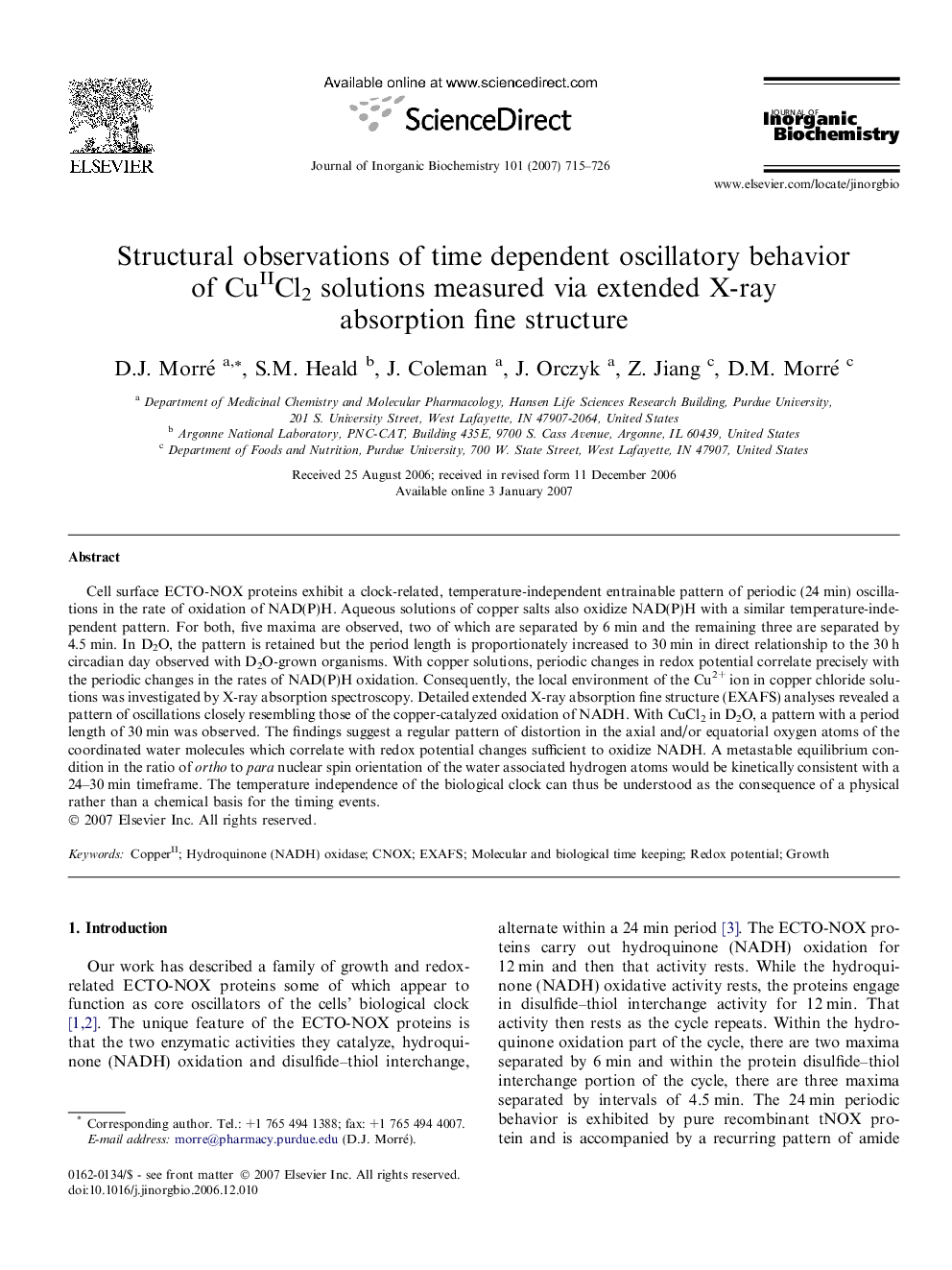| Article ID | Journal | Published Year | Pages | File Type |
|---|---|---|---|---|
| 1318146 | Journal of Inorganic Biochemistry | 2007 | 12 Pages |
Cell surface ECTO-NOX proteins exhibit a clock-related, temperature-independent entrainable pattern of periodic (24 min) oscillations in the rate of oxidation of NAD(P)H. Aqueous solutions of copper salts also oxidize NAD(P)H with a similar temperature-independent pattern. For both, five maxima are observed, two of which are separated by 6 min and the remaining three are separated by 4.5 min. In D2O, the pattern is retained but the period length is proportionately increased to 30 min in direct relationship to the 30 h circadian day observed with D2O-grown organisms. With copper solutions, periodic changes in redox potential correlate precisely with the periodic changes in the rates of NAD(P)H oxidation. Consequently, the local environment of the Cu2+ ion in copper chloride solutions was investigated by X-ray absorption spectroscopy. Detailed extended X-ray absorption fine structure (EXAFS) analyses revealed a pattern of oscillations closely resembling those of the copper-catalyzed oxidation of NADH. With CuCl2 in D2O, a pattern with a period length of 30 min was observed. The findings suggest a regular pattern of distortion in the axial and/or equatorial oxygen atoms of the coordinated water molecules which correlate with redox potential changes sufficient to oxidize NADH. A metastable equilibrium condition in the ratio of ortho to para nuclear spin orientation of the water associated hydrogen atoms would be kinetically consistent with a 24–30 min timeframe. The temperature independence of the biological clock can thus be understood as the consequence of a physical rather than a chemical basis for the timing events.
